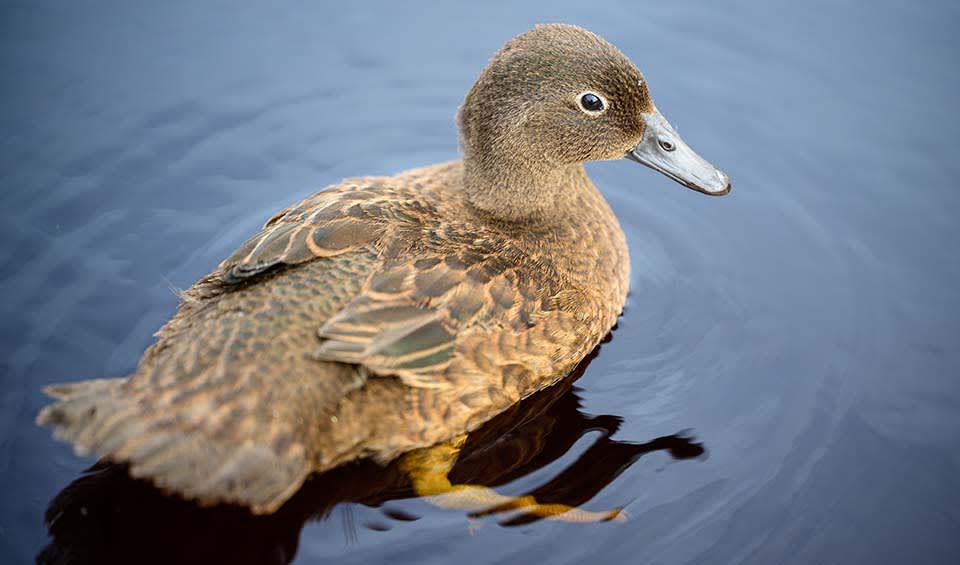A small, flightless duck that lives only on the remote Campbell Island group south of New Zealand. Once thought to be extinct, this shy and secretive bird is now a conservation success story. It was rediscovered in 1975 on a tiny nearby island called Dent Island, where a small population had managed to survive — hiding from predators and clinging to life in one of the world’s most isolated and windswept places.
The Campbell teal is a dark, chocolate-brown duck with a compact body, short wings, and strong legs. Though it cannot fly, it’s a fast and nimble runner, well adapted to scrambling through thick grass and rocky coastal areas. Unlike many ducks, it is mostly nocturnal, feeding and moving around more actively at night. During the day, it tends to stay hidden in dense vegetation. Its diet consists of insects, worms, and small invertebrates, which it searches for in damp soil and along the shoreline.
One of the biggest challenges the Campbell teal faced was introduced predators — particularly rats. These ducks originally lived on Campbell Island itself, but they vanished from the main island after rats were accidentally brought by ships in the 19th century. Luckily, the tiny Dent Island had no rats, and a few teals survived there. In the early 2000s, conservationists bred the birds in captivity and reintroduced them to Campbell Island after a massive rat eradication project — one of the most ambitious efforts of its kind.
Distribution
 New Zealand
New Zealand Official estimate
Official estimate
Anything we've missed?
Help us improve this page by suggesting edits. Glory never dies!
Suggest an editGet to know me
Terrestrial / Aquatic
Altricial / Precocial
Polygamous / Monogamous
Dimorphic (size) / Monomorphic
Active: Diurnal / Nocturnal
Social behavior: Solitary / Pack / Flock
Diet: Carnivore / Herbivore / Omnivore / Piscivorous / Insectivore
Migratory: Yes / No
Domesticated: Yes / No
Dangerous: Yes / No




